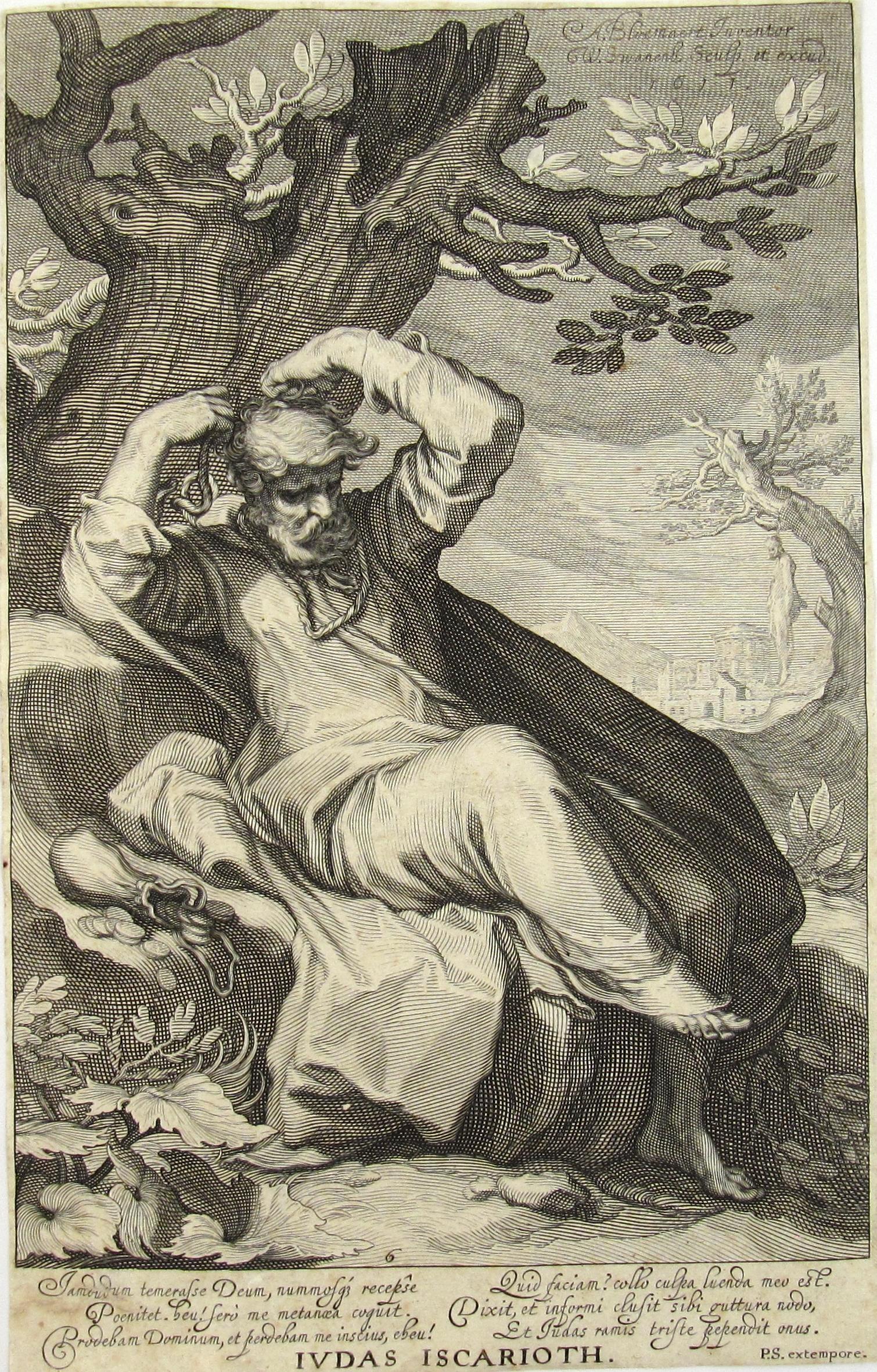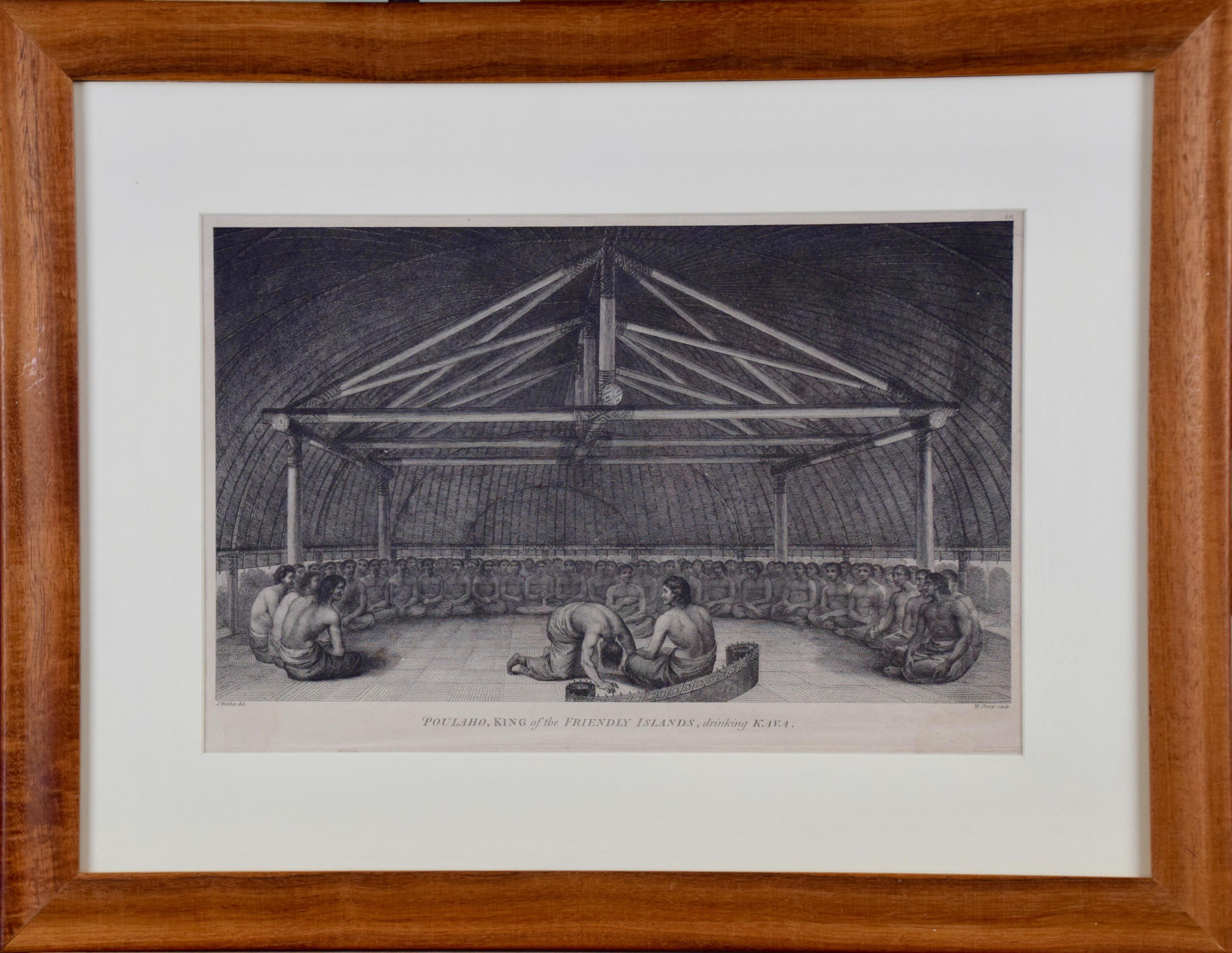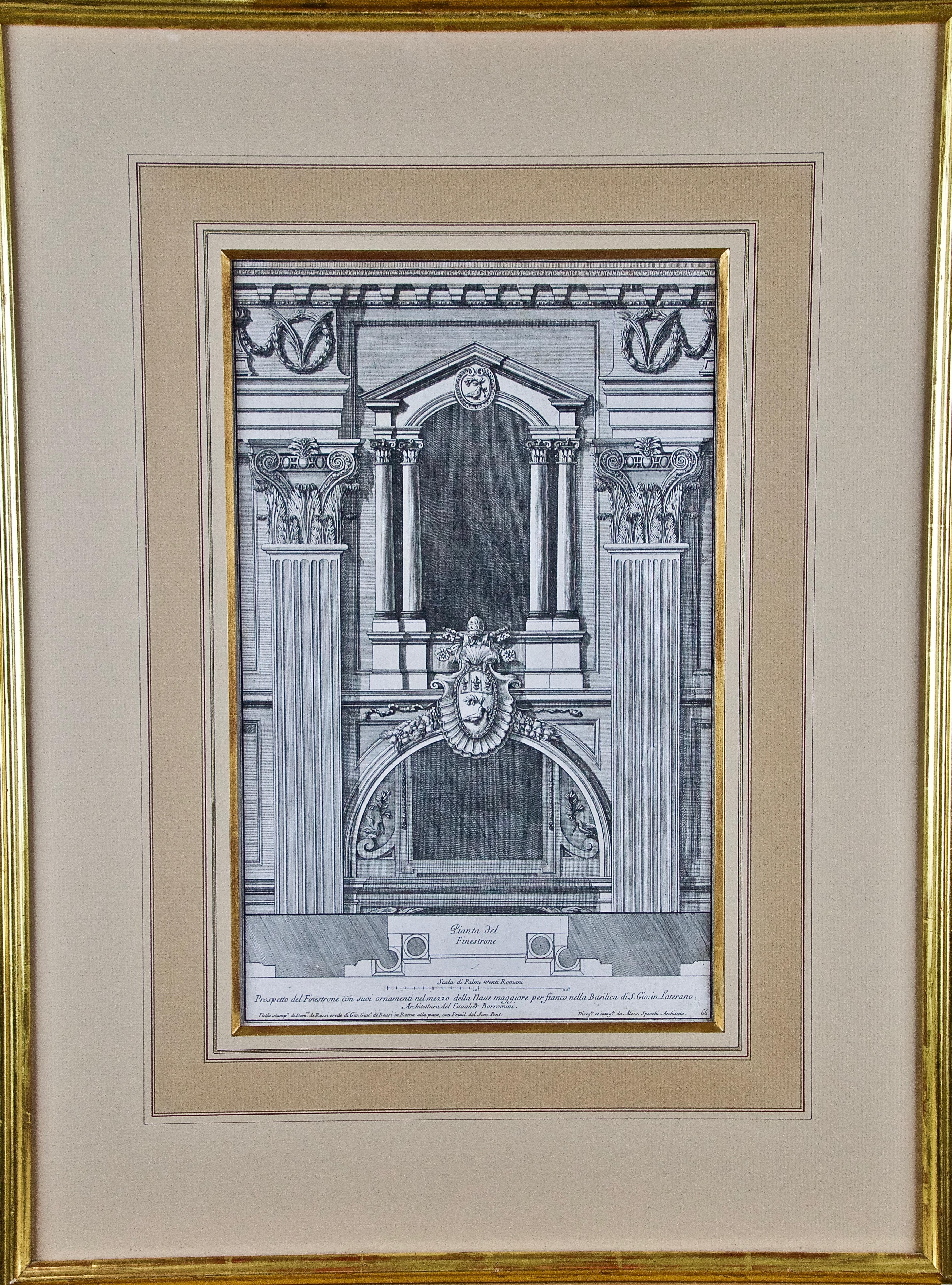Items Similar to Architectura Curiosa Nova, Sunburst Garden Fountain
Want more images or videos?
Request additional images or videos from the seller
1 of 3
Georg Andreas BöcklerArchitectura Curiosa Nova, Sunburst Garden Fountain1664
1664
About the Item
George Andreas Böckler, 'SunBurst Garden Fountain', antique copperplate engraving, 1664, from the book 'Architectura Curiosa Nova'. A fine, richly inked impression, on antique cream laid paper; the full sheet as published, in good condition. Image size 10 1/2 x 7 inches; sheet size 13 x 8 1/2 inches. Matted to museum standards, unframed.
ABOUT THE ARTIST
Georg Andreas Böckler (c. 1617-1687) was a German architect, engineer, and author. He was the architect of the city of Nuremberg and specialized in hydraulic architecture. Architectura Curiosa Nova was his main opus, a four-part work in one volume, published in 1664. Illustrated with 200 engravings, the decorative plates of the first three parts show the theory and application of hydrodynamics for fountains, water-jets, spray-patterns, garden fountains, and well heads; with elaborate and often fanciful designs for free-standing fountains. The fourth part includes designs for grottoes, garden pavilions, and architectural designs, including views of European palaces.
- Creator:Georg Andreas Böckler (1617 - 1687, German)
- Creation Year:1664
- Dimensions:Height: 10.5 in (26.67 cm)Width: 7 in (17.78 cm)
- Medium:
- Movement & Style:
- Period:1660-1669
- Condition:
- Gallery Location:Myrtle Beach, SC
- Reference Number:1stDibs: LU53235238552
About the Seller
5.0
Recognized Seller
These prestigious sellers are industry leaders and represent the highest echelon for item quality and design.
Platinum Seller
These expertly vetted sellers are 1stDibs' most experienced sellers and are rated highest by our customers.
Established in 1995
1stDibs seller since 2016
254 sales on 1stDibs
Typical response time: 1 hour
Associations
International Fine Print Dealers Association
- ShippingRetrieving quote...Ships From: Myrtle Beach, SC
- Return PolicyA return for this item may be initiated within 7 days of delivery.
More From This SellerView All
- ExploratorLocated in Myrtle Beach, SCGiovanni Domenico Campiglia, 'Explorator', engraving, 1734, edition unknown, scarce. Signed 'Dom. Campiglia del.' in the matrix, lower left. A fine impression, on handmade antique, l...Category
1730s Realist Nude Prints
MaterialsEngraving
- Architectura Curiosa Nova, Dragon Fish Garden FountainBy Georg Andreas BöcklerLocated in Myrtle Beach, SCGeorge Andreas Böckler, 'Dragon Fish Garden Fountain', antique copperplate engraving, 1664, from the book 'Architectura Curiosa Nova'. A fine, richly in...Category
1660s Realist Figurative Prints
MaterialsEngraving
- Architectura Curiosa Nova, Chalice Garden FountainBy Georg Andreas BöcklerLocated in Myrtle Beach, SCGeorge Andreas Böckler, 'Chalice Garden Fountain', antique copperplate engraving, 1664, from the book 'Architectura Curiosa Nova'. A fine, richly inked ...Category
1660s Realist Figurative Prints
MaterialsEngraving
- 'Venice, Maria della Salute' — 1930s ImpressionismBy Anton SchutzLocated in Myrtle Beach, SCAnton Schutz, 'Venice, Maria della Salute', etching, c. 1930. Signed and titled in pencil. A superb, richly-inked impression, with skillfully wiped plate tone, on cream wove paper, ...Category
1930s Realist Figurative Prints
MaterialsEtching
- 'Delaware River Bridge' — 1920s RealismBy Anton SchutzLocated in Myrtle Beach, SCAnton Schutz, 'Delaware Bridge' (Delaware, New Jersey), etching, c. 1927. Signed in pencil. A superb, richly-inked impression, with skillfully wiped plate tone, on BFK Rives, cream wove paper, the full sheet with margins (1 1/2 to 2 1/8 inches), in excellent condition. Archivally matted to museum standards, unframed. Image size 11 7/8 x 8 7/8 inches (302 x 225 mm); sheet size 15 7/8 x 12 1/4 inches (403 x 311 mm). ABOUT THIS IMAGE The Benjamin Franklin Bridge, originally named the Delaware River...Category
1920s Realist Figurative Prints
MaterialsEtching
- The House of Shango — African American artistBy Samella LewisLocated in Myrtle Beach, SCSamella Sanders Lewis, 'The House of Shango', lithograph, 1992, edition 60. Signed, dated, titled, and numbered '31/60' in pencil. A superb, richly-inked impression, on Arches cream wove paper; the full sheet with margins (1 1/4 to 3 1/2 inches), in excellent condition. Image size 24 x 18 inches (610 x 457 mm); sheet size 30 inches x 22 1/4 inches (762 x 565 mm). Archivally matted to museum standards, unframed. ABOUT THIS WORK “The title of this piece is an unmistakable harkening to African roots. Shango is a religious practice with origins in Yoruba (Nigerian) belief, deifying a god of thunder by the same name. Shango has been adopted in the Caribbean, most notably in Trinidad and Tobago, a fact that underscores the importance of transnationalism to Samella Lewis’s piece. Her work often grapples with issues of race in the U.S., and The House of Shango is no exception. Through a reliance on the gradual transformation of Shango—one that took place across continents and time—Lewis’s piece forms a powerful link between black Americans and their African and Caribbean counterparts. The figure depicted in the piece appears to emerge, quite literally, from the house of Shango. Given the roots and transformative process of the religion, The House of Shango can draw attention to the historical intersections to which black American culture is indebted.” —Laura Woods, Scripps College, Ruth Chander Williamson Gallery, Collection Highlights, 2018 ABOUT THE ARTIST Samella Lewis’ lifelong career as an artist, art historian, critic, curator, collector, and advocate of African American art has helped empower generations of artists in the United States and worldwide, earning her the designation “the Godmother of African American art.” Born and raised in Jim Crow era New Orleans, Lewis began her art education at Dillard University in 1941, transferring to Hampton University in Virginia, where she earned her B. A. and master's degrees. She completed her master's and a doctorate in art history and cultural anthropology at Ohio State University in 1951, becoming the first female African American to earn a doctorate in fine art and art history. Lewis taught art at Morgan State University while completing her doctorate. She became the first Chair of the Fine Arts Department at Florida A&M University in 1953. That same year Lewis also became the first African American to convene the National Conference of African American artists held at Florida A&M University. She was a professor at the State University of New York, California State University, Long Beach, and at Scripps College in Claremont, California. Lewis co-founded, with Bernie Casey, the Contemporary Crafts Gallery in Los Angeles in 1970. In 1973, she served on the selection committee for the exhibition BLACKS: USA: 1973 held at the New York Cultural Center. Samella Lewis's 1969 catalog 'Black Artists on Art', featured accomplished black artists typically overlooked in mainstream art galleries. She said of the book, "I wanted to make a chronology of African American artists, and artists of African descent, to document our history. The historians weren't doing it. It was really about the movement." From the 1960s through the 1970s, her work, which included lithographs, linocuts, and serigraphs, reflected her concerns with the values of human dignity, democracy, and freedom of expression. Between 1969 and 70, Lewis and E.J. Montgomery were consultants for a groundbreaking exhibition at the Oakland Public L designed to create greater awareness of African American history and art. Lewis was the founder of the International Review of African American Art in 1975. In 1976, she founded the Museum of African-American Art with a group of artistic, academic, business, and community leaders in Los Angeles, California. Lewis, the museum’s senior curator, organized exhibitions and developed new ways of educating the public about African American art. She celebrated African American art as an 'art of experience’ inspired by the artists’ lives. And she espoused the concept of African American art as an 'art of tradition', urging museums to explore the African roots of African American art. In 1984, Lewis produced an extensive monograph on Elizabeth Catlett, her beloved mentor at Dillard University. Lewis has been collecting art since 1942, focusing primarily on the WPA era and work created during the Harlem Renaissance. Pieces from her collection were acquired by the Hampton University Museum in Virginia, the world’s earliest collection of African American fine art...Category
1990s Realist Figurative Prints
MaterialsLithograph
You May Also Like
- Judas Iscarioth after Abraham Bloemaert (1564/66-1651), orig. published in 1611Located in Meinisberg, CHJudas Iscarioth - Judas hangs himself Engraved and published by Willem van Swanenburg (Dutch, 1580 - 1612) after designs by Abraham Bloemaert (1564...Category
1610s Realist Figurative Prints
MaterialsInk, Laid Paper, Engraving
- G. Paterson "Dinner Party at a Mandarin's House" Engraving After T. Allom c.1840Located in San Francisco, CAG. Paterson "Dinner Party at a Mandarin's House" Original Engraving After T. Allom C.1840 Original engraving Dimensions 8" wide x 5" high The frame measures 20.5" wide x 18.5" hig...Category
Mid-19th Century Realist Interior Prints
MaterialsEngraving
- "King of the Friendly Islands" (Tonga); Engraving from Captain Cook's 3rd VoyageBy John WebberLocated in Alamo, CA"Poulaho, King of the Friendly Islands, Drinking Kava" is an engraving created by William Sharp (1749-1824), from a drawing by John Webber (1752-1793), who was the artist on Captain James Cook's 3rd and final voyage of discovery. It was published in the atlas of "A Voyage to the Pacific Ocean Undertaken by the Command of His Majesty, for Making Discoveries in the Northern Hemisphere", the official British Admirality sanctioned journal published upon completion of the voyage in London in 1784 by Strahan & Cadell. Captain Cook visited Tonga on his 3rd voyage, which he named The Friendly Islands because of the warm welcome he and his crew received, unlike some of the other more hostile Pacific islands. The engraving depicts Cook and his men observed a kava ceremony at the village of Mu’a on Tongatapu. King Paulaho sits in the centre foreground, his back to the spectator with a man kneeling before him. The ceremonial mat depicted behind Paulaho indicates that nobody was allowed to sit behind him. The figure in the centre holds a single cup, referring to the Tongan custom of offering the cup to the king first. Kava is native to the islands of the South Pacific and was first described for English readers in 1768 by Captain James Cook. The kava root has been used for centuries as a central feature of ceremonies and celebrations because it was able to bring about a calming and pleasant social atmosphere. The root was crushed and processed into coconut milk to become the focal ceremonial beverage, simply referred to as kava. This engraving is presented in a Koa wood frame and a white mat. Koa wood is legendary in Hawaii. There are occasional faint spots, but the print is otherwise in very good condition. This amazing Koa wood is native to Hawaii and it is known for the deep rich colors and varied grain pattern. Koa has an honored heritage in Hawaii and is highly revered and sacred. The word “koa” means “warrior” in Hawaiian. The warriors of King Kamehameha the Great, created canoes and weapons from a wood plentiful on the Big Island of Hawaii. This wood became synonymous with the warriors themselves, and it became known as koa. There are three other engravings listed from the official journal of Captain Cook's 3rd voyage available that are presented in identical Koa wood frames and mats (LU117324682422, LU117324684052, LU117324684032). They would make a wonderful grouping for a display of 2, 3 or 4 prints. A discount is available for a grouping depending on the number of items included. Captain Cook is remembered as one of the greatest explorers and navigators in history. His explorations included Australia, New Zealand and islands of the South Pacific and the northwest coast of North America. Hawaii was discovered by Captain Cook during this voyage. Hawaii was originally called The Sandwich Islands in honor of The Earl of Sandwich...Category
1780s Realist Figurative Prints
MaterialsEngraving
- "Marine Chantier de Construction": 18th C. Engraving of Shipbuilding by DiderotBy Denis DiderotLocated in Alamo, CA"Marine Chantier de Construction", plate VIII from the 18th century "Encyclopédie, ou dictionnaire raisonné des sciences, des arts et des métiers" (Encyclopedia, or a Systematic Dict...Category
1750s Realist Landscape Prints
MaterialsEtching, Engraving
- 18th C. Italian Architectural Engraving of a Borromini Designed Church in RomeLocated in Alamo, CA"Pianta del Finestrone, Prospetto del finestrone con suoi ornamenti nel mezzo della naue maggiore per fianco nella Basilica di S. Gio. in Laterano" is an architectural engraving of an elevation of monumental windows with their associated columns and ornaments above an entrance to the Basilica of S. Gio. In Laterano in Rome, the Cathedral of the Most Holy Savior and of Saints John the Baptist and the Evangelist in the Lateran, also known as the Papal Archbasilica of Saint John in Lateran. It is the church of the Diocese of Rome which serves as the seat of the Roman Pontiff. The print was engraved by Alessandro Specchi (1668-1729), an engraver and architect, after a design by the Italian architect Francesco...Category
Early 1700s Realist Figurative Prints
MaterialsEngraving
- Architectural Engraving of the House of Conseequa, Canton, China by Thomas AllomBy Thomas AllomLocated in Alamo, CA"House of Conseequa, A Chinese Merchant in the Suburbs of Canton, From a Drawing in the possession of Sir Geo. Staunton, Bart." a hand colored engraving by Samuel Bradshaw (1810-1888...Category
1840s Realist Landscape Prints
MaterialsEngraving
Recently Viewed
View AllMore Ways To Browse
Well Head
Antique Well Head
Garden Fountains Used
Antique Sunburst
Antique Garden Fountains
Antique Garden Fountain
Fountain Fineal
Antique Water Fountain
Antique Water Fountains
Antique Garden Book
Fountains Europe
Fountain Head
Antique Garden Engraving
Antique Print Of Garden Architecture
Opus 2
George Andreas
Andrea Cream
Wedding Russia





